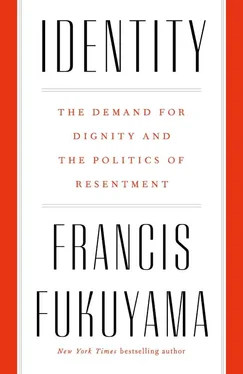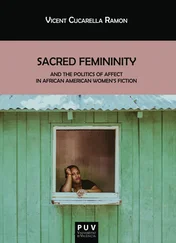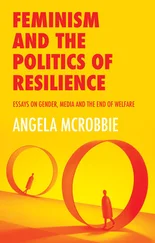If the United States is serious about assimilating immigrants, then it needs to reform its immigration system along the lines just outlined. Acquiring U.S. citizenship and swearing the naturalization oath are critical and poignant markers of assimilation. Some object that giving undocumented aliens a path to citizenship rewards them for breaking U.S. law and allows them to jump the queue ahead of legal aliens seeking naturalization. A public service requirement might help ease such concerns. The country is creating an unnecessary obstacle to assimilation under the fantasy that the millions of undocumented aliens living peacefully and productively in the country will ultimately be deported back to their countries of origin. Meanwhile, America’s inability to enforce existing laws ensures that this problem will persist.
Public policies that focus on the successful assimilation of foreigners might help take the wind out of the sails of the current populist upsurge both in Europe and in the United States. The new groups vociferously opposing immigration are actually coalitions of people with different concerns. A hard-core group are driven by racism and bigotry; little can be done to change their minds. They should not be catered to, but simply opposed on moral grounds. But others are concerned whether newcomers will ultimately assimilate. They worry less about there being immigration than about numbers, speed of change, and the carrying capacity of existing institutions to accommodate these changes. A policy focus on assimilation might ease their concerns and peel them away from the simple bigots. Whether or not this happens, a policy focusing on assimilation would be good for national cohesion.
Policies related to immigrants, refugees, and citizenship are at the heart of current identity debates, but the issue is much broader than that. Identity politics is rooted in a world in which the poor and marginalized are invisible to their peers, as Adam Smith remarked. Resentment over lost status starts with real economic distress, and one way of muting the resentment is to mitigate concerns over jobs, incomes, and security.
Particularly in the United States, much of the left stopped thinking several decades ago about ambitious social policies that might help remedy the underlying conditions of the poor. It was easier to talk about respect and dignity than to come up with potentially costly plans that would concretely reduce inequality. A major exception was President Obama, whose Affordable Care Act was a milestone in U.S. social policy. The ACA’s opponents tried to frame it as an identity issue, suggesting sotto voce that the policy was designed by a black president to help his black constituents. But it was in fact a national policy designed to help less well-off Americans, regardless of their race or identity. Many of the law’s beneficiaries include rural whites in the South who have nonetheless been persuaded to vote for Republican politicians vowing to repeal the ACA.
Identity politics has made the crafting of such ambitious policies more difficult. For much of the twentieth century, politics in liberal democracies revolved around broad economic policy issues. The progressive left wanted to protect ordinary people from the vagaries of the market, and to use the power of the state to more fairly distribute resources. The right for its part wanted to protect the free enterprise system and the ability of everyone to participate in market exchange. Communist, socialist, social democratic, liberal, and conservative parties all arrayed themselves on a spectrum from left to right that could be measured by the desired degree of state intervention, and commitment alternatively to equality or to individual freedom. There were important identity groups as well, including parties whose agendas were nationalist, religious, or regional in scope. But the stability of democratic politics in the period from the end of World War II up to the present revolved around dominant center-left and center-right parties that largely agreed on the legitimacy of a democratic welfare state.
This consensus now represents an old establishment that is being hotly contested by new parties firmly rooted in identity issues. This constitutes a big challenge for the future of democratic politics. While fights over economic policy produced sharp polarization early in the twentieth century, democracies found that opposing economic visions could often split the difference and compromise. Identity issues, by contrast, are harder to reconcile: either you recognize me or you don’t. Resentment over lost dignity or invisibility often has economic roots, but fights over identity often distract us from focusing on policies that could concretely remedy those issues. In countries such as the United States, South Africa, or India, with racial, ethnic, and religious stratifications, it has been harder to create broad working-class coalitions to fight for redistribution because the higher-status identity groups did not want to make common cause with those below them, and vice versa.
The rise of the politics of identity has been facilitated by technological change. When the internet first became a platform for mass communication in the 1990s, many observers (myself included) believed that it would be an important force for promoting democratic values. Information is a form of power, and if the internet increased everyone’s access to information, it should also have distributed power more broadly. Moreover, the rise of social media in particular seemed likely to be a useful mobilization tool, allowing like-minded groups to coalesce around issues of common concern. The peer-to-peer nature of the internet would eliminate the tyranny of hierarchical gatekeepers of all sorts, who curated the nature of information to which people had access.
And so it was: any number of antiauthoritarian uprisings, from the Rose and Orange Revolutions in Georgia and Ukraine to the failed Green Revolution in Iran to the Tunisian revolt and the Tahrir Square uprising in Egypt, were powered by social media and the internet. Government operations were much harder to keep secret once ordinary people had technological means of publicizing abuses; Black Lives Matter would likely not have taken off in the absence of ubiquitous cell phones and video recordings.
But over time, authoritarian governments such as that of China figured out how to control use of the internet for their own populations and to make it politically harmless, while Russia learned how to turn social media into a weapon that would weaken its democratic rivals. {12} But even absent these external players, social media has succeeded in accelerating the fragmentation of liberal societies by playing into the hands of identity groups. It connected like-minded people with one another, freed from the tyranny of geography. It permitted them to communicate, and to wall themselves off from people and views that they didn’t like, in “filter bubbles.” In most face-to-face communities, the number of people believing a given outlandish conspiracy theory would be very limited; online, one could discover thousands of fellow believers. By undermining traditional media’s editors, fact-checkers, and professional codes, it facilitated the circulation of bad information and deliberate efforts to smear and undermine political opponents. And its anonymity removed existing restraints on civility. Not only did it support society’s willingness to see itself in identity terms; it promoted new identities through online communities, as countless subreddits have done.
Fears about the future are often best expressed through fiction, particularly science fiction that tries to imagine future worlds based on new kinds of technology. In the first half of the twentieth century, many of those forward-looking fears centered around big, centralized, bureaucratic tyrannies that snuffed out individuality and privacy. George Orwell’s 1984 foresaw Big Brother controlling individuals through the telescreen, while Aldous Huxley’s Brave New World saw the state using biotechnology to stratify and control society. But the nature of imagined dystopias began to change in the later decades of the century, when environmental collapse and out-of-control viruses took center stage.
Читать дальше












